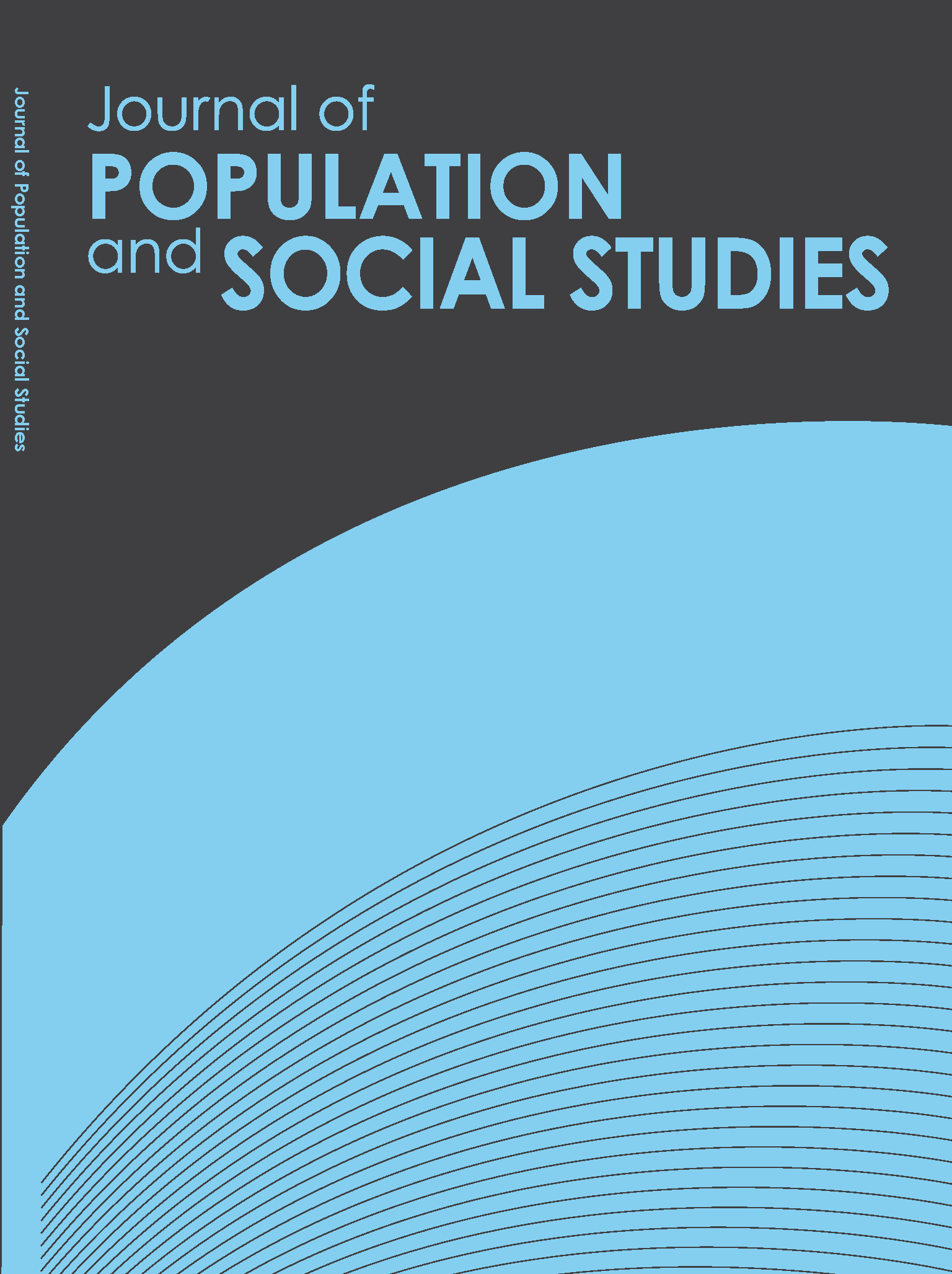Geographic Information System for Flood Hazard Area Delineation and Estimation of At-Risk Households at the Community Level: A Case Study of Salaya Sub-District, Nakhon Pathom Province
Main Article Content
Abstract
Every year, Thailand faces flooding, the greatest natural disaster threat for the country. It is at the household level where risk outcomes first materialize. This study delineates flood-hazard areas in Salaya sub-district and provides estimates of at-risk households located in this area by using geographic information system (GIS) technology with Potential Surface Analysis (PSA) and Overlay Analysis. The analysis classifies areas into different levels of hazard, hazard zones and at-risk households. The results show that 41.6% of the sub-district is an area of “moderate” flood hazard, comprising 10.45 square kilometers. “High” flood-hazard areas account for 8.98 square kilometers (35.9%), “low” hazard areas represent 4.28 square kilometers (17%) and “very low” hazard areas account for 1.38 square kilometers (5.5%). As or the number of households in the hazard area, it was estimated that the highest percentage—1,160 households or 50%—are located in moderate flood-risk areas, followed by low flood-risk areas (560 households or 24%), high flood-risk areas (521 households or 23%), and very low flood-risk areas (70 households or 3%). All results are shown on a map of the study area with a 1:50,000 scale.
Article Details
References
Centre for Research on the Epidemiology of Disasters. (2011). Annual disaster statistical review 2011: The numbers and trends. Belgium: Institute of Health and Society (IRSS). Retrieved from: http://cred.be/sites/default/files/2012.07.05.ADSR_2011.pdf
Chatputi, T. (2012). Application of GIS on flood risk area assessment in Si Racha District, Chon Buri Province. Journal of Science and Technology Mahasarakham University, 31(4).
Chumriang, P. (2008). Application of GIS on flash flood and landslide risk area database development and disaster management in Moung-Khou Chaiburi Forest Park, Phatthalung province. Songkhla, Thailand: Protected Areas Regional Office 6, Department of National Park Wildlife and Plant Conservation.
Dhanarun, S. & Amonsanguansin, J. (2010). Information system for flood risk area assessment in Angthong Province. Journal of Environment Management, 6(2).
Department of Disaster Prevention and Mitigation. , Ministry of Interior (2007). National disaster prevention and mitigation plan B.E. 2010-2014. Bangkok: Ministry of Interior.
Department of Disaster Prevention and Mitigation. (2013). The risk reduction from disaster to sustainable development. Bangkok: United Nations Development Programme (UNDP).
DHI Singapore. (2012). Thailand floods 2011 – The need for holistic flood risk management. Singapore: DHI-NTU Research Centre.
Hewitt, K. & Burton, I. (1971). The hazardousness of a place: A regional ecology of damaging events. Toronto: University of Toronto Press.
Mayomi, I., Dami, A. & Maryah, U. M. (2013). GIS based assessment of flood risk and vulnerability of communities in the Benue floodplains, Adamawa State, Nigeria. Journal of Geography and Geology, 5(4). doi: http://dx.doi.org/10.5539/jgg.v5n4p148
Middelmann, M. (2002, May). Flood risk in south-east Queensland, Australia. Paper presented at the 27th Hydrology and Water Resources Symposium, Institution of Engineers Australia, Melbourne, Australia.
Martin-Breen. P. & Anderies, .J.M. (2011, November). Resilience: A literature review. The Bellagio Initiative Background Paper. Retrieved from http://mobile.opendocs.ids.ac.uk/opendocs/bitstream/handle/123456789/3692/Bellagio-Rockefeller%20bp.pdf?sequence=1
Office of Natural Resources and Environmental Policy (ONEP), Ministry of Natural Resources and Environment. (1998). Risk area classification for natural hazards in northern watersheds. Nakhon Pathom, Thailand: The Printing Center for Promotion and Training of National Agriculture, Kasetsart University.
Peggion, M., Bernardini, A. & Masera, M. (2008). Geographic information systems and risk assessment. Italy: Institute for the Protection and Security of the Citizen.
Phisphumvidhi, P. (2012). The study of community with floods, past, present and future: A case study of Bangban, Nakhon Si Ayutthaya province. Bangkok: Thai Universities for Healthy Public Policy.
Yumuang, S. (2006). 2001 debris flow and debris flooding Nam Ko area, Phetchabun province, central Thailand. Environmental Geology, 51(4), 545-564. doi: http://dx.doi.org/10.1007/s00254-006-0351-9


